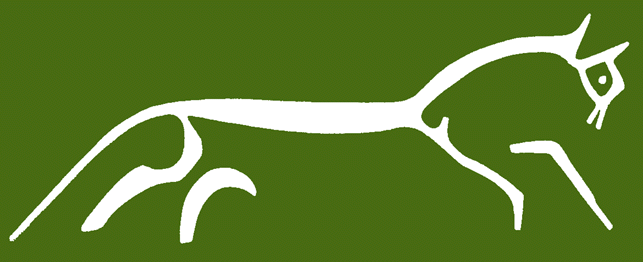
RBH Home
Maps & Travels
Articles
Legends
Towns & Villages
Castles & Houses
Churches
Biographies
Gentry
Family History
Odds & Ends
Mail David
The Uffington White Horse
Part 2: Antiquarians take an Interest

Antiquarian Suggested Origins
Local tradition has always held that the Uffington ‘White Horse’ was the dragon killed by St. George on nearby Dragon Hill. By the late 17th century, however, Antiquarians were beginning to look for more plausible explanations for its existence. The moonraker, John Aubrey (who died in 1700), suggested that the horse had been cut into the hillside by the first Saxon King, Hengist of Kent, as a white horse was always said to have been his symbol.
In 1738, however, Rev. Francis Wise made a relatively detailed study of this mysterious hill figure and put forward a theory that it was carved upon the orders of King Alfred the Great in celebration of his victory over the Danes at the Battle of Ashdown nearby. Wise also recorded the regular ‘scouring’ or cleaning of the White Horse and the traditional festival with games and prizes that accompanied this. It is generally supposed that his Alfredian hypothesis was also based on such local folklore.
Despite lack of proof and though scholar’s such as Thomas Hughes rejected the idea, the Alfred legend became extremely widespread; and the connection was celebrated with a song composed for the cleaning or 'scouring' festivities:
The Old White Horse wants setting to
rights
And the Squire has promised good cheer;
So we'll give him a scrape to keep him in shape,
And he'll last for many a year.
He was made a long, long time ago
With a great deal of labour and pains,
By King Alfred the Great, when he spoiled their conceit,
And caddled those worsbirds the Danes.
The Blowing-Stone, in days gone by,
Was King Alfred's bugle horn,
And the Thorning-Tree you may plainly see,
Which is called King Alfred's Thorn.
They'll be backsword play, and
climbing the pole,
And a race for pig and cheese;
And we think as he's a dumble soul
Who don't care for such sports as these.
Next: The Scouring of the White Horse
